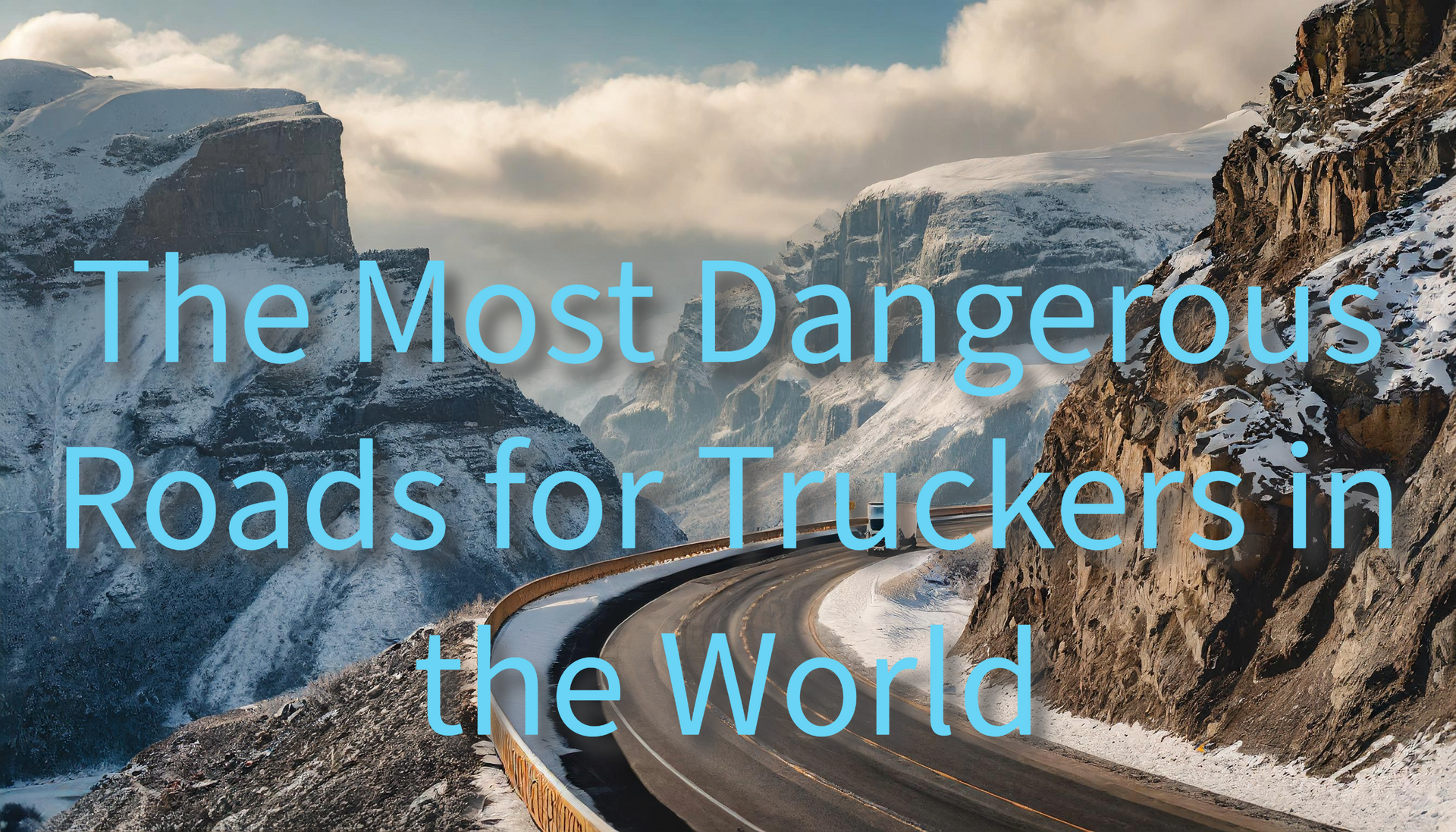New Title

Truck drivers are the backbone of global logistics, moving goods across long distances, often through challenging environments. However, some roads present extraordinary dangers, pushing truckers to their limits and putting their skills to the ultimate test. This article highlights the most dangerous roads for truckers across the globe, the risks involved, and how these treacherous routes impact the trucking industry.
The North Yungas Road, Bolivia – The Death Road
Known as "El Camino de la Muerte" or Death Road, the North Yungas Road is notorious for being one of the most dangerous roads in the world. It stretches 60 kilometers from La Paz to Coroico in Bolivia, and its narrow pathways, coupled with steep drop-offs, make this road particularly perilous. Truckers navigating this road must contend with:
- Steep Cliffs: The road has drop-offs that are over 2,000 feet high with no guardrails to provide protection.
- Lack of Paved Surfaces: Most of the road is unpaved, which makes it even more treacherous during Bolivia’s rainy season, when landslides and rock falls are common.
- Extreme Weather Conditions: Fog and rain reduce visibility, making it even more hazardous for truck drivers.
Truckers brave this route to connect remote areas, often carrying critical goods like food and supplies. One wrong move, however, can be fatal.
Dalton Highway, USA – The Ice Road
Stretching 414 miles through the isolated wilderness of Alaska, the Dalton Highway is one of the most dangerous trucking routes in the United States. The highway's icy conditions, remote location, and harsh weather are formidable obstacles for truckers. Key dangers include:
- Sub-zero Temperatures: Winter temperatures can drop as low as -60°F, making it one of the coldest trucking routes in the world.
- Limited Facilities: With only three small settlements along its entire length, truckers need to be well-prepared as help is often hours away.
- Ice and Snow: Slippery conditions are a constant hazard, especially during Alaska’s long winter months.
Despite the dangers, Dalton Highway is essential for truckers servicing Alaska’s oil industry. However, the isolation means that any breakdowns or accidents can leave drivers stranded for hours or even days.
Karakoram Highway, Pakistan/China – The Highest Road in the World
Connecting Pakistan with China, the Karakoram Highway is the highest paved international road in the world. At an elevation of 15,397 feet, this road runs through some of the most treacherous mountainous terrain. The risks truckers face include:
- Avalanches and Landslides: The Karakoram Highway is prone to frequent avalanches and landslides, especially during the rainy season, making it dangerous for truckers transporting goods between the two countries.
- High Altitude: Drivers face the challenge of maintaining control at extreme altitudes, where oxygen levels drop and weather conditions are unpredictable.
- Narrow Roads: The road itself is narrow, winding, and often bordered by steep cliffs.
Despite its dangers, the Karakoram Highway is an essential trade route between Pakistan and China, making it a popular route for truckers despite the risks involved.
James Dalton Highway, Canada – Yukon’s Frozen Tundra
In Canada’s Yukon Territory, the James Dalton Highway is another icy, remote road that presents immense challenges for truckers. Known for transporting essential goods to the oilfields of northern Canada, this road comes with a set of unique dangers:
- Harsh Cold: Sub-zero temperatures combined with high winds create dangerous driving conditions.
- Blizzards: Sudden snowstorms and whiteouts are frequent, reducing visibility to almost zero.
- Black Ice: Hidden under layers of snow, black ice makes controlling heavy trucks even more difficult.
Truckers on this road must have specialized vehicles equipped for the extreme cold, but even then, survival depends on experience and quick reflexes.
Guoliang Tunnel Road, China – Carved Into the Cliffs
This narrow road, carved into a cliffside in the Taihang Mountains of China, stretches for just 1.2 kilometers but poses severe risks for truckers. Built by villagers, it’s an unpaved, single-lane road with minimal safety features. Key hazards include:
- Lack of Guardrails: There are no guardrails to protect vehicles from the sheer drop-offs.
- Narrow Passages: The road’s narrow width allows for minimal room for error when navigating large trucks.
- Rock Falls: Constant rockfalls make this already treacherous road even more unpredictable.
Despite its short length, the Guoliang Tunnel Road is often used by truckers who need to deliver goods to the remote village of Guoliang, making it a critical, albeit dangerous, lifeline for the region.
The Siberian Road to Yakutsk, Russia – The Road of Bones
This infamous road, officially called the R504 Kolyma Highway, stretches across one of the coldest places on Earth. Known as the “Road of Bones,” it earned its grim name due to the number of prisoners who died during its construction in Stalin’s era. Dangers for truckers include:
- Extreme Cold: With temperatures dropping below -50°C (-58°F), trucks often freeze, making maintenance difficult.
- Permafrost: The ground remains frozen year-round, and sudden temperature shifts can cause parts of the road to crack or collapse.
- Isolation: This road is extremely isolated, with few service stations or towns, meaning truckers must be self-reliant and well-prepared for emergencies.
Despite the extreme cold and desolation, truckers continue to use this road to transport goods to remote regions in Siberia.
Los Caracoles Pass, Chile/Argentina – A Maze of Hairpin Turns
The Los Caracoles Pass between Chile and Argentina is infamous for its winding, narrow roads that feature steep inclines and numerous sharp hairpin turns. For truckers, the dangers of this road include:
- Sharp Turns: Hairpin turns can make it difficult for large trucks to navigate, especially in winter when the road is covered in ice and snow.
- Steep Cliffs: With no guardrails on some sections, a slight miscalculation can send trucks plummeting down the mountainside.
- Weather Conditions: Frequent snowstorms in the winter months make the road slippery and dangerous.
Truckers brave this road to transport goods between Chile and Argentina, but it is only open during favorable weather, as the winter conditions make it nearly impassable.
Dangerous Roads
While the roads mentioned above represent some of the most dangerous trucking routes globally, they also highlight the resilience and skills of truck drivers who tackle these challenging environments daily. The trucking industry relies on these routes to ensure global supply chains stay intact, often at great personal risk to truckers. From Bolivia’s Death Road to Siberia’s Road of Bones, these roads demand respect and caution, but they are vital arteries for trade and transportation.



office & Parking depot
5120 Belmont Rd Unit K, Downers Grove, IL 60515, USA
Hours of operation
Mon - Sun: 7am-5pm
